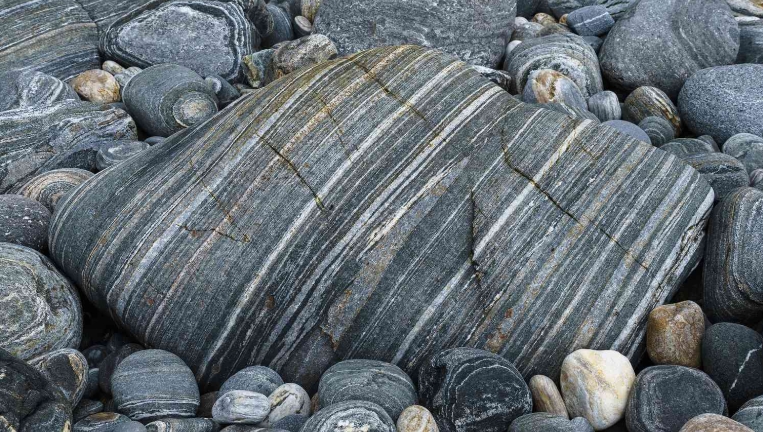Metamorphism is a process in which rocks undergo changes in texture, mineralogy, and sometimes chemical composition due to shifts in temperature, pressure, and the presence of fluids. There are several different types of metamorphism, each with its own unique geological significance.
Contact Metamorphism:
Contact metamorphism occurs when rocks come into contact with a heat source, such as magma. This type of metamorphism results in changes to the rocks near the contact zone, but the changes are generally localized and do not extend far from the heat source. Contact metamorphism can create new minerals and textures in rocks, and is responsible for the formation of metamorphic aureoles around intrusions.
Regional Metamorphism:
Regional metamorphism occurs over large areas and is typically associated with tectonic forces such as mountain building or plate interactions. This type of metamorphism can result in the formation of foliated rocks, where minerals are aligned in parallel layers, and can also create new minerals through recrystallization. Regional metamorphism is responsible for the formation of many of the world’s major mountain ranges.
Dynamic Metamorphism:
Dynamic metamorphism occurs along fault zones where rocks are subjected to intense pressure and shearing forces. This type of metamorphism can create mylonites, which are rocks that have undergone intense deformation and have a characteristic foliated appearance. Dynamic metamorphism is important for understanding the processes of faulting and plate tectonics.
Hydrothermal Metamorphism:
Hydrothermal metamorphism occurs when rocks are altered by hot, aqueous fluids. These fluids can transport dissolved minerals and cause chemical reactions that result in the formation of new minerals. Hydrothermal metamorphism is often associated with mineral deposits and can be important for understanding ore formation.
Metamorphic Rocks and Geological Significance:
Metamorphic rocks are important indicators of past geological processes and can provide valuable information about the history of an area. By studying the textures, mineralogy, and structures of metamorphic rocks, geologists can reconstruct the tectonic history of a region and gain insight into past environmental conditions.
In conclusion, the different types of metamorphism each play a unique role in shaping the Earth’s crust and provide valuable insights into the processes that have shaped our planet over millions of years. By understanding the various types of metamorphism and their geological significance, we can better interpret the history of our planet and the forces that continue to shape it today.

